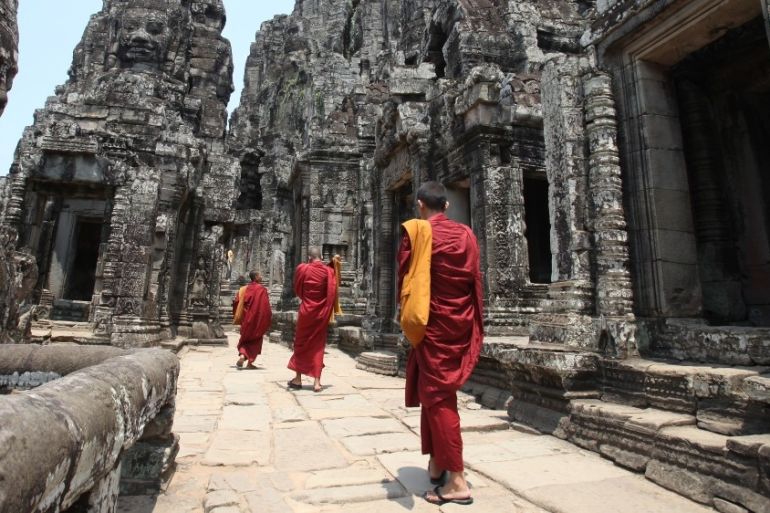Carved stone turtle unearthed from Angkor reservoir in Cambodia
Archaeologists also found several other ancient artefacts at the site of a small temple within the World Heritage site.

Cambodian archaeologists have unearthed a large centuries-old statue of a turtle at the historic Angkor temple complex in the country’s west.
The 56 centimetre by 93 centimetre (22 inches by 37 inches) carved stone turtle is believed to date from the 10th century and was discovered on Wednesday during digging at what was the site of a small temple that had been built on Srah Srang, one of Angkor’s several reservoirs.
Keep reading
list of 4 itemsInside the pressures facing Quebec’s billion-dollar maple syrup industry
‘Accepted in both [worlds]’: Indonesia’s Chinese Muslims prepare for Eid
Photos: Mexico, US, Canada mesmerised by rare total solar eclipse
Researchers pinpointed where the temple had been and workers drained off the water to enable the dig, which began on March 16, said Mao Sokny, head of the excavation team of the Apsara Authority, a government agency that oversees the Angkor archaeological site.
The bottom half of the turtle remained buried on Thursday as preparations were being made to lift it out without damaging it.
Cambodian archaeologists have unearthed a large centuries-old statue of a turtle in an excavation at the famous Angkor temple complex in the country’s northwest. The 56-by-93 centimeter (22-by-37 inch) carved stone turtle believed to date from the 10th century was discovered Wed. pic.twitter.com/aW3QJsN4ap
— Sopheng Cheang (@SophengCheang) May 7, 2020
Angkor was strongly influenced by Hindu culture and when a temple or other important structure was built, sacred objects would often be buried in the ground underneath to ensure safety and good fortune. In several Asian cultures, turtles are seen as symbols of longevity and prosperity.
The dig also discovered some other rare artefacts, including two metal tridents and a carved head of a mythical creature.
The Angkor complex is a UNESCO (The United Nations Educational, Scientific and Cultural Organization) World Heritage site and is included in the Cambodian flag. It is also the country’s biggest tourist attraction.
Mao Sokny said discoveries of such artifacts help Cambodians take pride in their heritage.